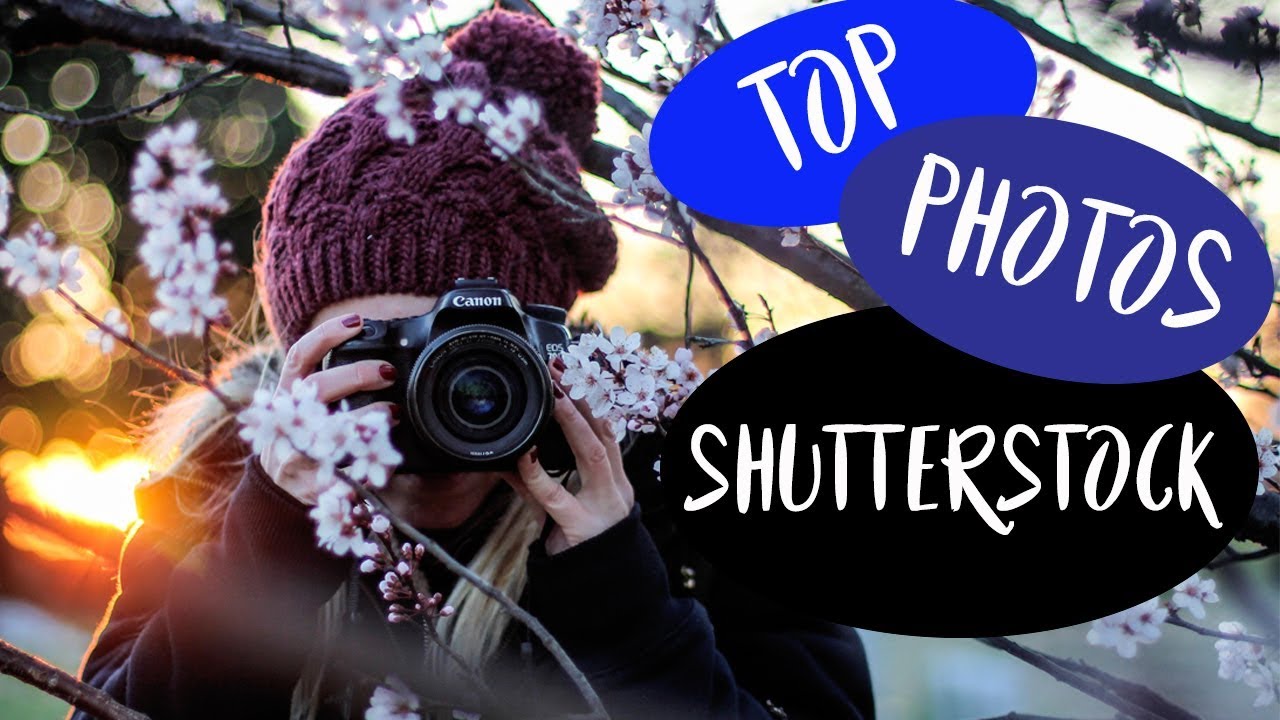If you love photography and are looking to turn your passion into a source of income, Shutterstock is a fantastic platform to showcase and sell your work. With millions of buyers worldwide, your photos can reach a vast audience, and you can earn royalties every time someone licenses your images. But success on Shutterstock isn’t just about snapping great shots; it’s about understanding what sells, meeting their standards, and consistently producing high-quality content. In this post, we’ll explore some effective tips to help your photos stand out and sell well on
Understanding Shutterstock’s Content Guidelines and Requirements

Before you start uploading your photos, it’s crucial to understand Shutterstock’s content guidelines and technical requirements. This ensures your images are accepted and have the best chance of selling. Shutterstock maintains strict quality standards because they want to offer clients professional, high-quality images. Here’s what you need to know:
Technical Specifications
- File format: JPEG only, with a minimum of 4 MP (megapixels).
- Resolution: Minimum of 4 megapixels; higher resolution images are more appealing.
- Color profile: sRGB or Adobe RGB for accurate color representation.
- Compression: Keep JPEG compression balanced—avoid overly compressed images that lose quality.
Content Quality & Composition
Shutterstock prioritizes sharp, well-composed images with good lighting and minimal noise. Here are some tips:
- Focus: Ensure your subject is sharp and centered unless creatively justified otherwise.
- Lighting: Use natural or studio lighting to highlight your subject without harsh shadows.
- Background: Keep backgrounds clean and uncluttered unless the scene calls for complexity.
- Post-processing: Enhance your photos with subtle editing—adjust brightness, contrast, and color balance, but avoid over-editing.
Model & Property Releases
If your photos feature recognizable people or private property, you must secure the appropriate legal releases. Without them, your images may be rejected or removed. Be proactive:
- Model releases: For identifiable individuals, obtain signed releases to certify you have permission to sell images featuring them.
- Property releases: For private property or branded items, secure releases to avoid copyright issues.
Content Restrictions
Shutterstock has strict rules about what can and cannot be uploaded. Some common restrictions include:
- Images depicting illegal activities or violence are prohibited.
- Content that infringes on trademarks or copyrights cannot be sold.
- Depictions of sensitive or controversial topics should be approached carefully and ethically.
- Low-quality, blurry, or heavily compressed images will not pass their standards.
Summary
Understanding and adhering to Shutterstock’s guidelines is essential for getting your images accepted and maximizing sales potential. Focus on technical excellence, legal compliance, and thoughtful composition. Once you’re familiar with these requirements, you’ll be well on your way to creating a portfolio that not only meets standards but also stands out in a crowded marketplace. Remember, quality and compliance are the keys to turning your photography hobby into a profitable venture on Shutterstock!
Choosing Popular and Profitable Photography Subjects

When it comes to selling photos on Shutterstock, picking the right subjects can make all the difference. Think of it like catching the wave at the perfect moment — if you choose popular themes that resonate with a broad audience, your photos are more likely to get noticed and purchased. So, how do you identify these lucrative subjects?
First, do a bit of research. Spend time browsing Shutterstock’s top-selling images. Notice recurring themes, colors, and styles. Common popular categories include business, technology, health, nature, travel, food, and lifestyle. These are themes that businesses and content creators often need for their projects. For example, images depicting diverse teams working together, fresh healthy foods, or serene landscapes tend to perform well.
Another tip is to think about current trends and seasonal topics. For instance, during the New Year, images of celebrations and goal-setting are in demand. During summer, beach scenes and outdoor activities sell more. Stay updated with current events and societal trends which can inspire timely, relevant photos.
Don’t be afraid to get creative within these categories. For example, instead of just a generic coffee mug, shoot a vibrant workspace setup with a focus on productivity. Or, instead of a simple landscape, capture an unusual perspective or a unique element that makes your photo stand out.
Here’s a quick list of profitable photography subjects to consider:
- Business and Corporate: meetings, teamwork, office environments
- Technology: gadgets, digital devices, modern innovations
- Health & Wellness: fitness, healthy food, medical themes
- Nature & Environment: landscapes, wildlife, eco-friendly themes
- Travel & Lifestyle: destinations, cultural scenes, everyday moments
- Food & Drinks: appetizing dishes, beverages, cooking scenes
Remember, the goal is to find subjects that are in demand but also ones you can shoot well. Authenticity, quality, and relevance are what make a photo sellable. Keep an eye on market trends, but also add your unique twist to stand out from the crowd.
Preparing Your Equipment and Shooting Techniques
Great photos start with the right equipment and solid shooting techniques. You don’t need the fanciest gear to succeed, but understanding your tools and how to use them effectively can significantly boost your chances of capturing images that sell.
Start with the basics: a good camera — whether it’s a DSLR, mirrorless, or a high-quality smartphone — can do wonders. If you’re serious about stock photography, investing in a camera with manual controls, good low-light performance, and a decent resolution (at least 12MP) is worthwhile.
Next, invest in essential accessories:
- Tripod: Keeps your shots steady, especially in low light or when shooting long exposures.
- Lighting: Natural light is your best friend. Shoot during the golden hours — early morning or late afternoon — for soft, flattering light. If shooting indoors or in tricky lighting, consider a portable LED light or softbox.
- Backdrops & Props: For studio shoots, clean backdrops and relevant props can help create appealing scenes.
Now, let’s talk about shooting techniques:
- Focus and Composition: Use the rule of thirds to create balanced, engaging images. Make sure your main subject is sharp and clear.
- Lighting: Always pay attention to light direction and quality. Avoid harsh shadows unless they add artistic value. Diffuse natural light with reflectors or softboxes for softer, more appealing images.
- Angles and Perspectives: Don’t just shoot from eye level. Experiment with different angles — overhead, low, or close-up shots can add interest and variety.
- Consistency: Keep your style cohesive. Consistent editing and color schemes help your portfolio feel professional and recognizable.
Lastly, don’t forget to shoot in the highest quality settings available. RAW files give you the most flexibility in post-processing, allowing you to enhance your images without losing quality.
Remember, patience and practice are key. Take your time setting up each shot, experiment with different settings, and review your images critically. The more you refine your technique, the more likely you are to produce stock photos that stand out and sell.
Capturing High-Quality and Unique Images
When it comes to selling photos on Shutterstock, quality is king. But it’s not just about snapping a sharp picture; it’s about capturing images that stand out and tell a story. So, how do you ensure your photos are both high-quality and unique?
First, invest in good equipment. You don’t need the most expensive camera out there, but a decent DSLR or mirrorless camera with a good lens can make a big difference. Pay attention to lighting—natural light is often the best choice, especially during the golden hours just after sunrise or before sunset. If shooting indoors, consider using softboxes or diffusers to create even, flattering light.
Next, focus on composition. Use the rule of thirds to create balanced images, but don’t be afraid to experiment with different angles and perspectives. Unique compositions can turn an ordinary scene into something compelling. Look for interesting foregrounds, backgrounds, and leading lines to guide the viewer’s eye through the photo.
It’s also essential to focus on clarity and sharpness. Always use a tripod when possible to avoid camera shake, and make sure your autofocus is precise. Pay attention to your depth of field—sometimes a blurred background can make your subject pop, while other times everything in focus works better.
Now, the element of uniqueness—this is what sets your photos apart. Think outside the box and look for fresh ideas. Instead of typical shots of a beach, try capturing a sunset reflected in a puddle or an unusual angle of the shoreline. Incorporate interesting props or human elements to add context and emotion.
Finally, always be mindful of copyright and avoid generic or overused themes. Shutterstock buyers are looking for fresh, original images that they can’t find everywhere. Keep a lookout for trending topics, but add your personal twist to make your photos truly stand out.
Editing and Enhancing Your Photos for Marketability
Once you’ve captured stunning images, the next step is editing. The goal here is to enhance your photos without overdoing it. Remember, natural-looking images tend to sell better, but a little touch-up can make a good shot outstanding.
Start with basic adjustments: correct exposure, contrast, white balance, and sharpness. These tweaks can dramatically improve your image’s clarity and visual appeal. Use editing software like Adobe Lightroom or Photoshop—both are popular choices among professional and hobbyist photographers alike.
Crop thoughtfully to improve composition and remove distracting elements. Sometimes, a simple crop can transform a mediocre shot into a perfect one. Pay attention to the aspect ratio—most Shutterstock images are in a 3:2 or 4:3 format, so crop accordingly.
Next, consider retouching when necessary. For portraits, minor skin smoothing or removing blemishes can be helpful, but avoid excessive retouching that makes the image look unnatural. For scenes, enhance colors to make them pop—boost vibrance and saturation carefully to avoid oversaturation.
Advanced editing might include removing unwanted objects or distractions using clone or healing tools. This can be especially useful if something inadvertently entered your frame, like a passerby or trash can.
Be consistent with your editing style. This doesn’t mean all images should look the same, but having a recognizable style can help build your brand as a photographer. Also, save your edited versions in high-resolution formats, preferably JPEG with minimal compression, to ensure they look professional and crisp when uploaded.
Lastly, always review your images on different devices—computer screens, tablets, even smartphones—to ensure they look great everywhere. A well-edited, high-quality image is much more likely to catch the eye of Shutterstock buyers and make those sales happen!
Uploading and Optimizing Your Photos for Shutterstock
Once you’ve taken a bunch of stunning photos that you’re proud of, the next important step is to upload and optimize them for Shutterstock. Think of this as making sure your photos are dressed up and ready to catch the eye of buyers browsing the platform. Properly uploading and optimizing can make a huge difference in how often your images get noticed and purchased.
First off, ensure your images meet Shutterstock’s technical requirements. They typically prefer high-resolution JPEG files, ideally at least 4 megapixels, with a minimum of 300 dpi for quality. Make sure your photos are well-exposed, sharply focused, and free of noise or distractions. If needed, do some basic editing to enhance colors, contrast, or remove any blemishes.
Now, when you upload your photos, pay close attention to the metadata—this includes the title, description, and keywords. Think of this as giving your photos a detailed label that helps users find them easily:
- Title: Keep it clear and descriptive. For example, “Sunset over Mountain Lake” instead of just “Sunset.”
- Description: Add context and details. Mention the location, mood, or any interesting story behind the shot.
- Keywords: Use relevant tags that match what buyers might search for. Use both broad and specific keywords. For example, “nature,” “mountains,” “sunset,” “reflection,” “lake.”
Be honest and accurate—avoid keyword stuffing or misleading descriptions, as this can hurt your reputation and ranking.
Additionally, consider adding model or property releases if your photos include recognizable people or private property. This expands the potential licensing options and makes your images more versatile.
Lastly, review Shutterstock’s guidelines or best practices periodically, as they update their platform and requirements. Keeping your uploads professional and well-optimized increases the chances of your photos getting accepted and featured.
Strategies to Increase Your Photos’ Visibility and Sales
Getting your photos uploaded is just the beginning. The real challenge is making sure they stand out in a crowded marketplace. Here are some friendly and effective strategies to boost your photos’ visibility and, ultimately, increase your sales:
- Consistent Uploading: Regularly add new content to keep your portfolio fresh. Shutterstock favors active contributors, and more images mean more chances to be discovered.
- Focus on Trends and Niches: Keep an eye on current market trends—think themes like remote work, sustainability, or diverse representation. Creating images that align with popular topics can give your portfolio a boost.
- Optimize for Search: Use accurate, well-researched keywords and descriptive titles. Think about what your target buyers might search for, and include those terms naturally.
- Engage with the Community: Participate in forums, comment on other photographers’ work, and stay active. Sometimes, building relationships can lead to collaborations or referrals.
- Promote Outside Shutterstock: Share your best images on social media platforms like Instagram, Pinterest, or LinkedIn. Use hashtags and tags to reach a broader audience and direct traffic back to your Shutterstock profile.
- Create Collections and Series: Group related images into collections or series. This not only organizes your portfolio but also encourages buyers to purchase multiple images from a set.
- Monitor Your Performance: Use Shutterstock’s analytics tools to see which images perform best. Focus on creating more content similar to your top sellers.
Remember, patience and persistence are key. Building a successful stock photography portfolio takes time, but with consistent effort and smart strategies, you’ll see your visibility grow and sales increase. Keep experimenting, learning, and adapting, and you’ll find your images making a real impact in the marketplace.
Tips for Consistent Success as a Stock Photographer
Achieving consistent success on Shutterstock isn’t just about snapping a few good shots here and there. It’s about building a reliable portfolio that keeps attracting buyers over time. Here are some tips to help you stay on top of your game and ensure your photos continue to sell:
Stay Updated with Trends
One of the biggest keys to success is understanding what buyers are looking for. Trends change fast, so regularly browse Shutterstock’s trending images, browse industry blogs, or follow social media trends. Incorporate popular themes such as sustainable living, remote work, or diverse representation into your shoots to stay relevant.
Maintain a Consistent Style and Quality
While experimenting is good, having a recognizable style helps your work stand out. Whether you prefer vibrant colors, minimalist compositions, or candid shots, consistency builds your brand. Also, always prioritize quality—sharp focus, proper lighting, and good composition are non-negotiable.
Build a Diverse Portfolio
Don’t put all your eggs in one basket. Cover a broad range of subjects, styles, and concepts. This diversity increases the chances of your photos matching various buyer needs. For example, include images of people, landscapes, objects, and conceptual themes.
Regular Uploads and Optimization
Keep your portfolio fresh by uploading new images regularly. Also, optimize your keywords, titles, and descriptions—think like a buyer. Use relevant, specific keywords to improve discoverability, and update your metadata if you notice new trends emerging.
Engage with the Shutterstock Community
Join forums, social media groups, or webinars for stock photographers. Sharing experiences and learning from others can provide new insights, inspiration, and motivation. Plus, collaborating or getting feedback can help refine your skills.
Be Persistent and Patient
Success doesn’t happen overnight. It takes time to build a portfolio that sells consistently. Keep uploading, refining your work, and learning from your analytics. Over time, your efforts will pay off with steady sales and positive feedback.
Conclusion and Final Advice for Selling Photos on Shutterstock
Getting your photos to sell on Shutterstock can be an exciting and rewarding journey. Remember, it’s all about quality, relevance, and persistence. Start by mastering the basics—good composition, lighting, and understanding what buyers want. Then, focus on creating a diverse, high-quality portfolio that aligns with current trends.
Don’t forget to optimize your images with the right keywords and descriptions; this helps ensure your photos are found by the right audience. Keep an eye on your analytics to see what’s working and adjust your strategy accordingly. Consistency is key—regular uploads and engagement with the community will set you apart from the competition.
Finally, stay patient and persistent. Success in stock photography is a marathon, not a sprint. Keep honing your skills, stay inspired, and don’t be discouraged by slow starts. With dedication and a strategic approach, you’ll be well on your way to building a thriving income stream from your photography on Shutterstock. Happy shooting!


